
Traveling with Fearful Dogs
When you see pictures of our dogs, Ty and Buster, posing in fun locations around the country with big smiles on their furry faces, you might never guess that they both suffer from fear and anxiety. The truth is, both of our boys are afraid of other dogs, and Ty is afraid of strangers as well.
We're not professional trainers, but traveling full-time with our dogs for nearly seven years has taught us a few things:
- Your own dog's behavioral challenges may seem embarrassing, but it's important to remember that no pet is perfect, and you'll both be better off when you acknowledge and begin working with your pet's limitations.
- Traveling with your dog can be a fantastic opportunity for training, which will help increase his confidence.
- Every dog is motivated by something. Discovering what makes your dog happy will help you both through the "ruff" times.
- Patiently helping your dog overcome their challenges strengthens your relationship.
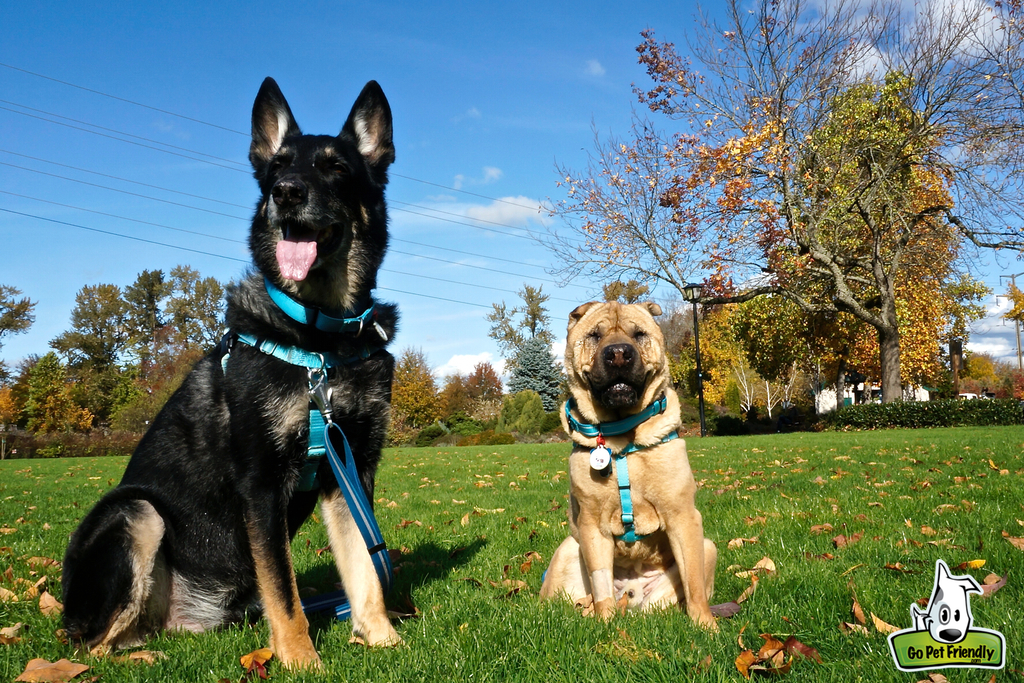
We've also developed some strategies to help Ty and Buster navigate our mobile lifestyle with as little stress as possible. Perhaps something that's working for us will help your dog, too!
1. A taking the dogs to crowded places. This means planning our outings for less popular times of the day, scheduling most of our sightseeing for weekdays when other people are at work, and trying to visits destinations during their off-season, when possible.
2. Give them a voice. Of course, you can't always have the whole trail, sidewalk, or park to yourself. For years we've been using a "Do Not Pet" vest to keep strangers from approaching Ty. It's amazing how much more relaxed he's become in crowds as he learned that people aren't going to try to touch him.
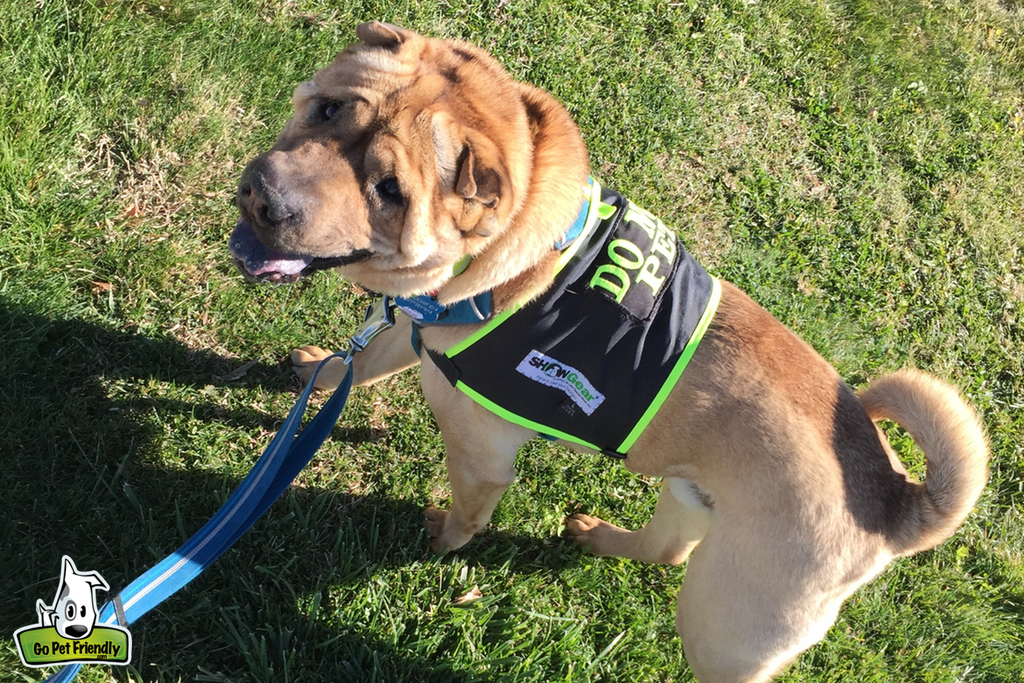
3. Walking Ty and Buster early and late. Getting out while everyone is still asleep is one way to ensure we don't meet a lot of people and dogs on our walks around RV parks.
4. Head off the beaten path. If there's a particularly popular spot for dog walking, you'll find us heading in the opposite direction. We've gotten good at sniffing out quiet trails and less attractive, but serviceable grassy patches to meet our needs.
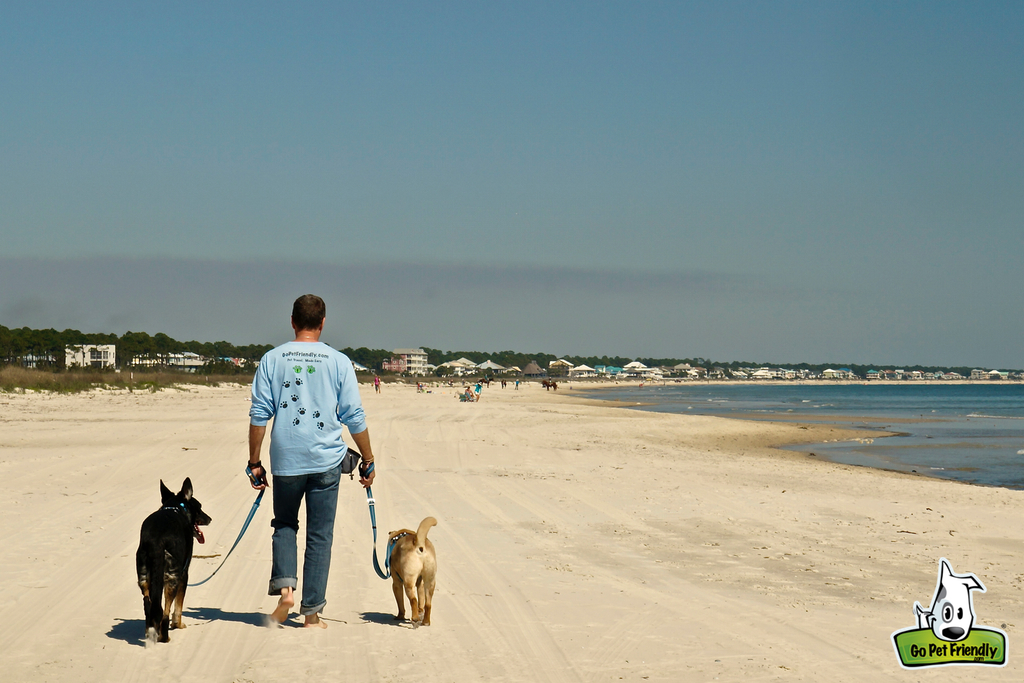
5. Make training a game that provides what your dog needs. Since both Ty and Buster are afraid of other dogs, we started a game called "Where's the Doggy?" When we see dogs at a comfortable distance, we ask Ty and Buster if they can spot the pooch. When they do, we say "YES!" and give them a treat. The goal over time is to reduce the distance that Ty and Buster need from other dogs to be comfortable, and eventually resolve the fear they feel from seeing other dogs.
6. Never leave home without treats. Both Ty and Buster are food-motivated, so we've invested in treat pouches, and they're always stocked with something the boys find irresistible. Using food to redirecting Ty and Buster's attention when they're faced with something challenging has allowed us to helping the boys move past their fears.
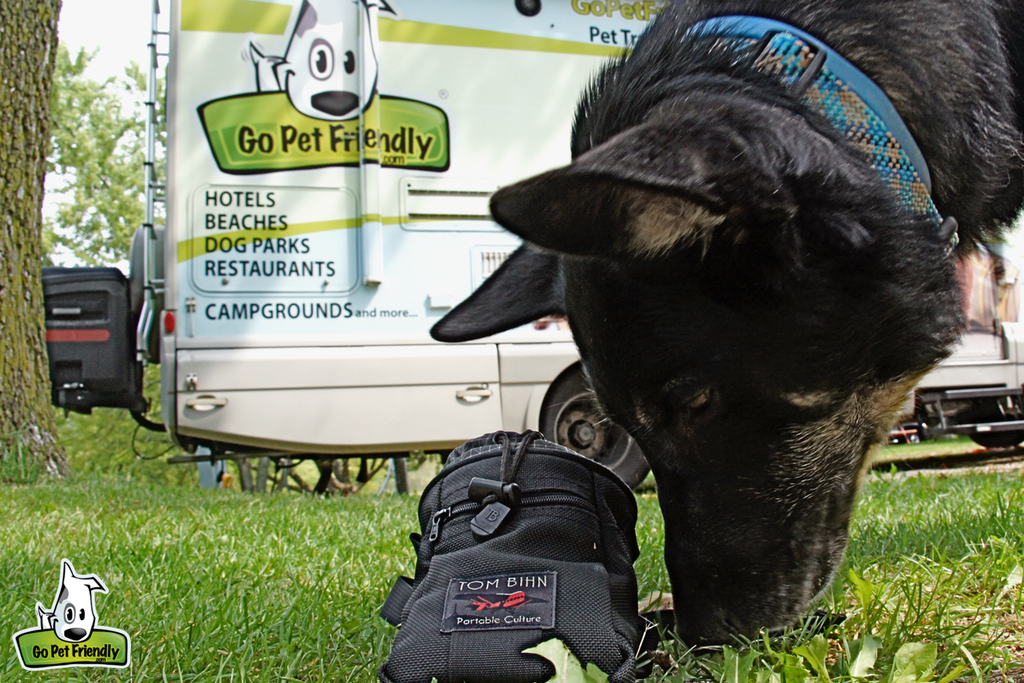
7. Notice how your dog calms himself, and work with it. A good example of this is a game we developed for Buster called, "Find It." We noticed that when Buster got over-excited he'd go sniff bushes, trees, or whatever was close to calm himself down. We modified that behavior to help Buster cope with stressful situations by tossing treats on the ground in front of him and telling him to "Find it," so he can continuing to move past/away from what's scaring him. Over time it's become a game that he really enjoys.
8. Some tricks you teach your dog can be useful. This one got started accidentally when we were teaching the boys to walk through our legs - but for Ty it turned into a valuable maneuver. We call it "Parking in the Garage," and it means that Ty stands between our feet whenever he's feeling uncomfortable (and sometimes when he's just angling for a treat). It's especially useful at busy crosswalks when he feels strangers are too close, or when we stop to chat with someone in the RV park that Ty's concerned may try to touch him.
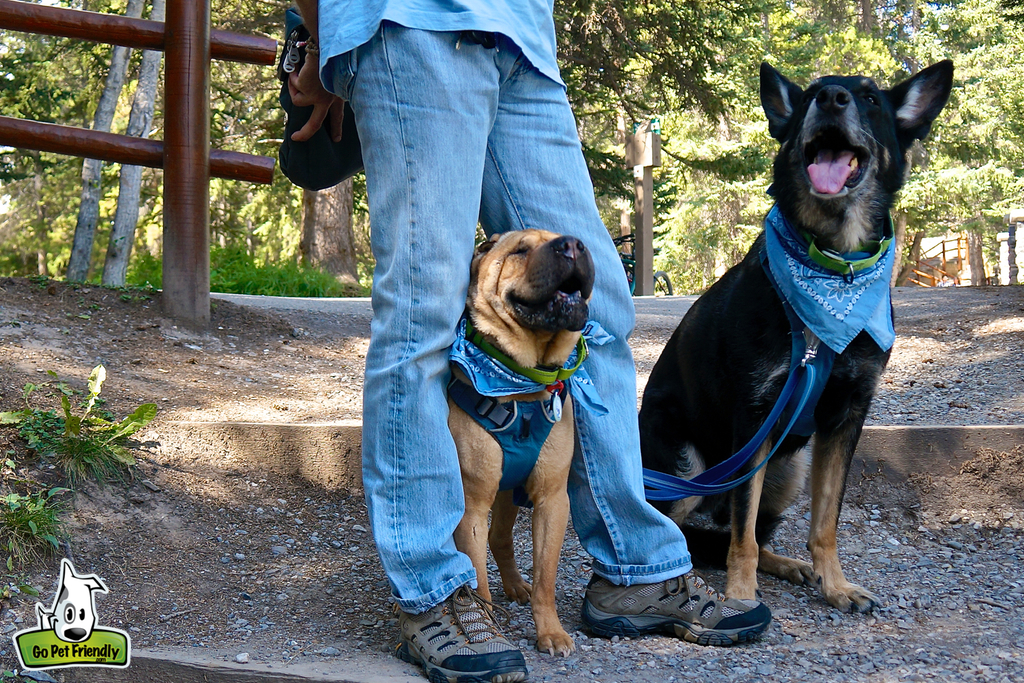
9. Skip the obvious instigators. Doggy parades, big pet friendly festivals, and dog parks are some places that we know we simply can't take our dogs. As much as I'd like to, Ty and Buster would be miserable. And for the time being, I'd rather do things that we can all enjoy together.
Just because your dog isn't perfectly behaved doesn't mean that you can't all enjoy traveling together! It's taken some time for us to discover the best ways to manage Ty and Buster's challenges, but now we rarely even think about it -- for us, it's just become a way of life.
Comments
Comments on this post are moderated, so they will not appear instantly. All relevant questions and helpful notes are welcome! If you have a service inquiry or question related to your RV, please reach out to the customer care team directly using the phone numbers or contact form on this page .